关于中美经贸磋商的中方立场(双语全文)
新华网 2019-06-03 09:04

国务院新闻办公室2日发表《关于中美经贸磋商的中方立场》白皮书。双语全文如下:

关于中美经贸磋商的中方立场
China’s Position on the China-US Economic and Trade Consultations
(2019年6月)
中华人民共和国
国务院新闻办公室
(June 2019)
The State Council Information Office of
The People’s Republic of China
目录
Contents
前言
Preface
一、美国挑起对华经贸摩擦损害两国和全球利益
I. Economic and trade friction provoked by the US damages the interests of both countries and of the wider world
二、美国在中美经贸磋商中出尔反尔、不讲诚信
II. The US has backtracked on its commitments in the China-US economic and trade consultations
三、中国始终坚持平等、互利、诚信的磋商立场
III. China is committed to credible consultations based on equality and mutual benefit
结束语
Conclusion
前言
Preface
中美经贸关系是两国关系的“压舱石”和“推进器”,事关两国人民根本利益,事关世界繁荣与稳定。两国建交以来,双边经贸关系持续发展,合作领域不断拓宽,合作水平不断提高,形成了高度互补、利益交融的互利共赢关系,不仅两国受益,而且惠及全球。
The China-US commercial relationship serves as both the ballast and the propeller of the overall bilateral relationship. At stake are the fundamental interests of the two peoples, and the prosperity and stability of the world. Since the establishment of diplomatic relations between China and the US, bilateral trade and economic relations have come a long way, with expanding fields of cooperation at higher levels. A mutually beneficial and win-win relationship with strong complementarity and interlinked interests has been forged, benefiting not only the two countries but also the entire world.
由于发展阶段、经济制度不同,两国在经贸合作中难免出现分歧和摩擦。在中美经贸关系发展历程中,也曾多次出现波折、面临困难局面。两国本着理性、合作的态度,通过对话协商解决问题,化解了矛盾、缩小了分歧,双边经贸关系更趋成熟。
Given the differences in stage of development and economic system, it is inevitable that the two countries will experience differences and friction in their commercial cooperation. The history of China-US trade and economic relations has seen twists and turns and difficult situations. By adopting a rational and cooperative attitude, the two countries have managed to resolve previous conflicts, bridge differences, and render the bilateral commercial relationship more mature through dialogue and consultation.
2017年新一届美国政府上任以来,以加征关税等手段相威胁,频频挑起与主要贸易伙伴之间的经贸摩擦。2018年3月以来,针对美国政府单方面发起的中美经贸摩擦,中国不得不采取有力应对措施,坚决捍卫国家和人民利益。同时,中国始终坚持通过对话协商解决争议的基本立场,与美国开展多轮经贸磋商,努力稳定双边经贸关系。中国的态度是一贯的、明确的。中美合则两利,斗则俱伤,合作是双方唯一正确的选择。对于两国经贸分歧和摩擦,中国愿意采取合作的方式加以解决,推动达成互利双赢的协议。但合作是有原则的,磋商是有底线的,在重大原则问题上中国决不让步。对于贸易战,中国不愿打,不怕打,必要时不得不打,这个态度一直没变。
Since it took office in 2017, the new US administration has threatened additional tariffs and other measures and provoked frequent economic and trade friction with its major trading partners. In response to the economic and trade friction unilaterally initiated by the US since March 2018, China has had to take forceful measures to defend the interests of the nation and its people. At the same time, committed to resolving disputes through dialogue and consultation, China has engaged in multiple rounds of economic and trade consultations with the US in an effort to stabilize the bilateral commercial relationship. China’s position has been consistent and clear – that cooperation serves the interests of the two countries, that conflict can only hurt both, and that cooperation is the only correct choice for both sides. Concerning their differences and frictions on the economic and trade front, China is willing to work together with the US to find solutions, and to reach a mutually beneficial and win-win agreement. However, cooperation has to be based on principles. There are bottom lines in consultations. China will not compromise on major issues of principle. China does not want a trade war, but it is not afraid of one and it will fight one if necessary. China’s position on this has never changed.
为全面介绍中美经贸磋商基本情况,阐明中国对中美经贸磋商的政策立场,中国政府特发布此白皮书。
To provide a comprehensive picture of the China-US economic and trade consultations, and present China’s policy position on these consultations, the Chinese government hereby issues this White Paper.
一、美国挑起对华经贸摩擦损害两国和全球利益
I. Economic and trade friction provoked by the US damages the interests of both countries and of the wider world
现任美国政府奉行“美国优先”政策,对外采取一系列单边主义和保护主义措施,动辄使用关税“大棒”,将自身利益诉求强加于他国。美国启用尘封多年的“201调查”“232调查”等手段,对各主要贸易伙伴频频出手,搅乱全球经贸格局。美国还将矛头对准中国,于2017年8月启动单边色彩浓厚的“301调查”,无视中国多年来在加强知识产权保护、改善外资营商环境等方面的不懈努力和取得的巨大成绩,对中国作出诸多不客观的负面评价,采取加征关税、限制投资等经贸限制措施,挑起中美经贸摩擦。
Trumpeting “America First”, the current US administration has adopted a series of unilateral and protectionist measures, regularly wielded tariffs as a “big stick” and coerced other countries into accepting its demands. The US has initiated frequent investigations under the long-unused Sections 201 and 232 against its main trading partners, causing disruption to the global economic and trade landscape. Specifically targeting China, in August 2017 it launched a unilateral investigation under Section 301. Turning a blind eye to China’s unremitting efforts and remarkable progress in protecting intellectual property and improving the business environment for foreign investors, the US issued a myriad of slanted and negative observations, and imposed additional tariffs and investment restrictions on China, provoking economic and trade friction between the two countries.
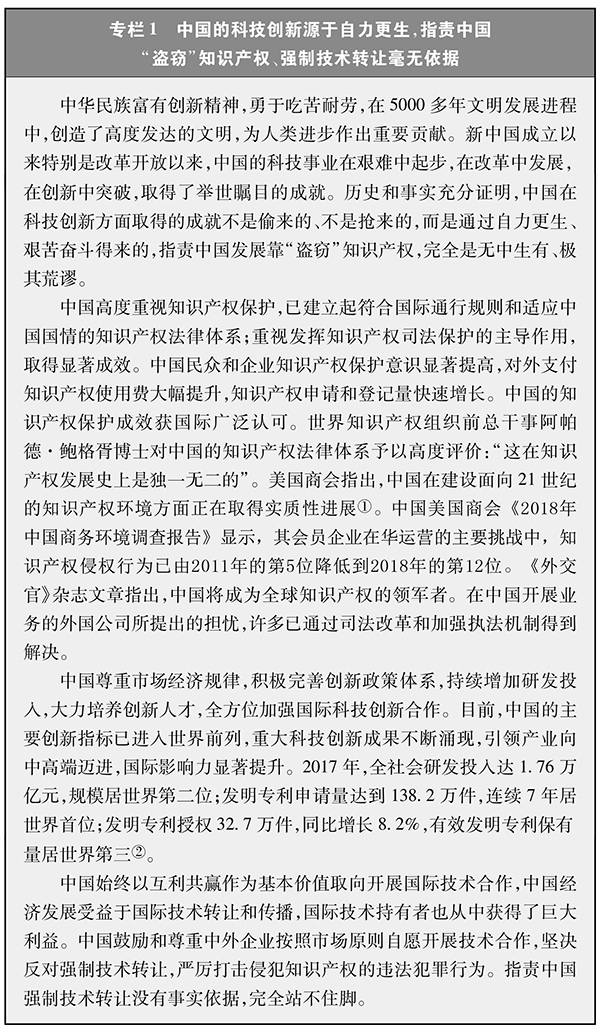
Box 1: China’s technological innovation is based on self-reliance. Accusing China of intellectual property theft and forced technology transfer is utterly unfounded.
China is an innovative and diligent nation. It has created a highly-sophisticated civilization and contributed significantly to human progress over the course of 5,000 years. Since the founding of the People’s Republic in 1949, and in particular since the beginning of reform and opening up in 1978, China’s scientific and technological undertakings have passed through a series of phases. They started from a difficult beginning, forged ahead in the course of reform, and have now achieved multiple breakthroughs featuring a variety of innovations. These achievements have won worldwide recognition. Historical records confirm that China’s achievements in scientific and technological innovation are not something we stole or forcibly took from others; they were earned through self-reliance and hard work. Accusing China of stealing intellectual property to support its own development is an unfounded fabrication.
China is fully committed to intellectual property protection. It has established a legal system for the protection of intellectual property that is consistent with prevailing international rules and adapted to China’s domestic conditions. China values the leading role of judicial measures in protecting intellectual property, and has achieved impressive results. The understanding of the importance of intellectual property among the general public and business community in China has increased, the value of royalties paid to foreign rights-holders has risen significantly, and the number of intellectual property applications and registrations has surged.
The effective impact of China’s intellectual property protection has won broad international recognition. Former WIPO Director General Arpad Bogsch spoke highly of China’s legal framework for intellectual property protection, noting that China’s achievements are “unmatched in the history of intellectual property protection”. The US Chamber of Commerce recognized that China is making concrete progress in creating an intellectual property environment appropriate to the 21st century. In its 2018 China Business Climate Survey Report, the American Chamber of Commerce in China noted that among the main challenges facing its member companies operating in China, concern over intellectual property dropped from 5th place in 2011 to 12th place in 2018. An article in The Diplomat predicted that China will become a leader in global intellectual property. Many of the concerns raised by foreign firms doing business in China have already been addressed through judicial reform and a strengthened enforcement mechanism.
Respecting the laws of the market economy, China has been actively improving the policy system for innovation, continuously increasing investment in research and development, accelerating the development of innovators, and strengthening international cooperation on technological innovation in an all-round way. In terms of some key innovation indices, China is already among the world’s leading players. As China continues to witness a series of major scientific and technological achievements, its industries are gravitating toward the middle and high end, and the country’s international influence is markedly increasing. In 2017, total R&D investment in China reached RMB1.76 trillion, ranking second in the world. The number of patent applications reached 1.382 million, ranking No. 1 in the world for the seventh consecutive year. The number of invention patents granted reached 327,000, up by 8.2 percent year-on-year. China ranks third in the world in terms of valid invention patents held.
China has always pursued international technical cooperation with mutual benefit and win-win as the basic value orientation. China’s economic development has benefited from international technology transfer and dissemination. International holders of technology have also reaped enormous benefits from this process. China encourages and respects voluntary technical cooperation between Chinese and foreign firms based on market principles. It strongly opposes forced technology transfer and takes resolute action against intellectual property infringement. Accusations against China of forced technology transfer are baseless and untenable.
美国无视中美经济结构、发展阶段特点和国际产业分工现实,坚持认为中国采取不公平、不对等的贸易政策,导致美国出现对华贸易逆差,在双边经贸交往中“吃了亏”,并对华采取单边加征关税措施。事实上,在经济全球化时代,中美两国经济高度融合,共同构成完整的产业链,两国经济连骨带筋、互利共赢,把贸易逆差当作“吃亏”是算错了账。美国对中国采取的贸易限制措施不利于中国,也不利于美国,更不利于全球。
Turning a blind eye to the nature of the economic structure and the stage of development in China and the US, as well as the reality of the international industrial division of labor, the US insists that China’s “unfair” and “non-reciprocal” trade policies have created a trade deficit in bilateral commercial exchanges that constitutes “being taken advantage of”, leading to unilateral imposition of additional tariffs on China. In fact, in today’s globalized world, the Chinese and American economies are highly integrated and together constitute an entire industrial chain. The two economies are bound in a union that is mutually beneficial and win-win in nature. Equating a trade deficit to being taken advantage of is an error. The restrictive measures the US has imposed on China are not good for China or the US, and still worse for the rest of the world.
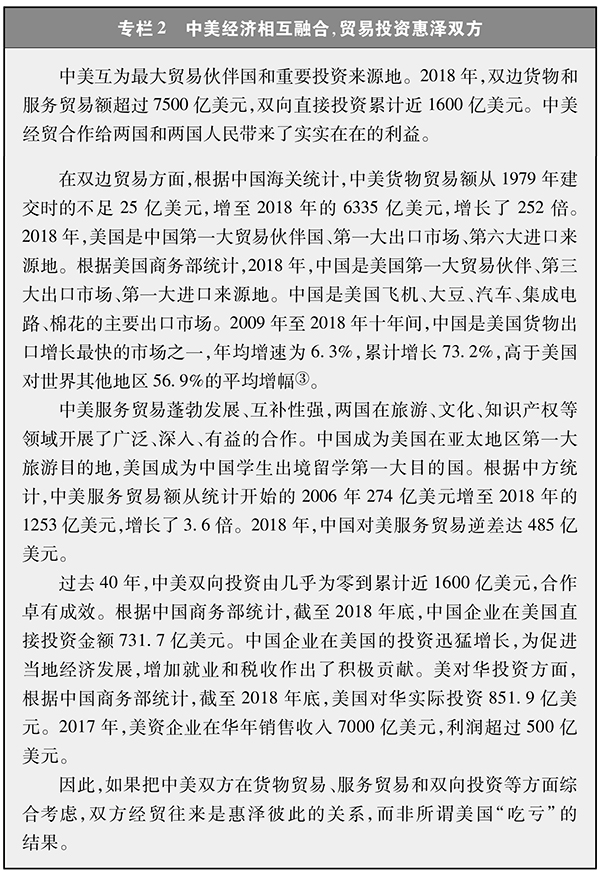
Box 2: The Chinese and American economies are interlinked, and bilateral trade and investment are mutually beneficial
China and the US are each other’s largest trading partner and important source of investment. In 2018, bilateral trade in goods and services exceeded US$750 billion, and two-way direct investment approached US$160 billion. China-US commercial cooperation has brought substantial benefits to both countries and both peoples.
According to China Customs, the trade in goods between China and the US grew from less than US$2.5 billion in 1979 when the two countries forged diplomatic ties to US$633.5 billion in 2018, a 252-fold increase. In 2018, the US was China’s largest trading partner and export market, and the sixth largest source of imports. According to the US Department of Commerce, in 2018 China was the largest trading partner of the US, its third largest export market, and its largest source of imports. China is the key export market for US airplanes, soybeans, automobiles, integrated circuits and cotton. During the ten years from 2009 to 2018, China was one of the fastest growing export markets for American goods, with an annual average increase of 6.3 percent and an aggregate growth of 73.2 percent, higher than the average growth of 56.9 percent represented by other regions in the world.
Trade in services between China and the US is flourishing and highly complementary. The two countries have conducted extensive, in-depth, and mutually-beneficial cooperation in tourism, culture, and intellectual property. China is the largest destination for US tourists in the Asia-Pacific and the US is the largest overseas destination for Chinese students. According to Chinese figures, two-way trade in services rose from US$27.4 billion in 2006, the earliest year with available statistics, to US$125.3 billion in 2018, a 3.6-fold increase. In 2018, China’s services trade deficit with the US reached US$48.5 billion.
Over the past forty years, two-way investment between China and the US has grown from near zero to approximately US$160 billion, and this cooperation has proved fruitful. According to MOFCOM, by the end of 2018 accumulative Chinese business direct investment in the US exceeded US$73.17 billion. The rapid growth of Chinese business investment in the US has contributed to local economic growth, job creation, and tax revenues. According to MOFCOM, the paid-in investment by the US in China was US$85.19 billion by the end of 2018. In 2017, the total annual sales revenues of US-invested companies in China were US$700 billion, with profits exceeding US$50 billion.
Therefore, if trade in goods and services as well as two-way investment are taken into account, China-US trade and economic relations are mutually beneficial, rather than the US “being taken advantage of”.
(一)美国加征关税措施损人不利己
(I) The tariff measures the US imposed harm others and are of no benefit to itself
美国政府对中国输美商品加征关税,阻碍双边贸易投资合作,影响两国乃至全球市场信心和经济平稳运行。美国的关税措施导致中国对美出口额下滑,2019年1月至4月同比下降9.7%(注4),连续5个月下降。同时,由于中国不得不针对美国加税采取加征关税应对,美国对华出口连续8个月下降(注5)。中美经贸摩擦带来的不确定性使两国企业对开展投资合作持观望态度,中国对美投资持续下滑,美国对华投资增速也明显降低。据中国有关方面统计,2018年中国企业对美直接投资57.9亿美元,同比下降10%(注6)。2018年美国实际对华投资金额26.9亿美元(注7),增速从2017年的11%大幅回落至1.5%。由于中美经贸摩擦前景不明,世界贸易组织将2019年全球贸易增长速度由3.7%下调至2.6%(注8)。
The US administration has imposed additional tariffs on Chinese goods exported to the US, impeding two-way trade and investment cooperation and undermining market confidence and economic stability in the two countries and globally. The US tariff measures lead to a decrease in the volume of China’s export to the US, which fell by 9.7 percent year-on-year in the first four months of 2019, dropping for five months in a row. In addition, as China has to impose tariffs as a countermeasure to US tariff hikes, US exports to China have dropped for eight months in a row. The uncertainty brought by US-China economic and trade friction made companies in both countries more hesitant about investing. China’s investment in the US continues to fall and the growth rate of US investment in China has also slowed down. According to Chinese statistics, direct investment by Chinese companies in the US was US$5.79 billion in 2018, down by 10 percent year-on-year. In 2018, paid-in US investment in China was US$2.69 billion, up by only 1.5 percent year-on-year compared with an increase of 11 percent in 2017. With the outlook for China-US trade friction unclear, the WTO has lowered its forecast for global trade growth in 2019 from 3.7 percent to 2.6 percent.
(二)贸易战没有给美国带来所谓的“再次伟大”
(II) The trade war has not “made America great again”
加征关税措施不仅没有推动美国经济增长,反而带来了严重伤害。
The tariff measures have not boosted American economic growth. Instead, they have done serious harm to the US economy.
一是提高美国企业生产成本。中美制造业相互依存度很高,许多美国制造商依赖中国的原材料和中间品,短期内难以找到合适的替代供应商,只能承担加征关税的成本。
First, the tariff measures have significantly increased production costs for US companies. The Chinese and US manufacturing sectors are highly dependent on each other. Many American manufacturers depend on China’s raw materials and intermediary goods. As it is hard for them to find good alternative suppliers in the short term, they will have to bear the costs of the tariff hikes.
二是抬升美国国内物价。进口中国物美价廉的消费品是美国通胀率长期保持低位的重要因素之一。加征关税后,中国产品最终销售价格提高,实际上美国消费者也承担了关税成本。美国全国零售商联合会研究显示,仅对中国家具征收25%关税一项,就使美国消费者每年多付出46亿美元的额外支出(注9)。
Second, the tariff measures lead to domestic price hikes in the US. The import of value-for-money consumer goods from China is a key factor behind the long-term low inflation in the US. After the additional tariffs were imposed, the final selling price of Chinese products increased, leaving American consumers effectively bearing some tariff costs. According to research by the US National Retail Federation, the 25 percent additional tariffs on furniture alone will cost the US consumer an additional US$4.6 billion per year.
三是影响美国经济增长和民生。美国商会和荣鼎集团2019年3月联合发布的报告显示,受中美经贸摩擦影响,2019年及未来4年美国国内生产总值将可能每年减少640亿至910亿美元,约占美国国内生产总值总额的0.3%-0.5%。如美国对所有中国输美商品征收25%关税,未来10年美国国内生产总值将累计减少1万亿美元(注10)。美国智库“贸易伙伴”(Trade Partnership)2019年2月发布的研究报告显示,如美国对所有中国输美商品加征25%的关税,美国国内生产总值将减少1.01%,就业岗位将减少216万个,一个四口之家每年支出将增加2294美元(注11)。
Third, the tariff measures have an impact on US economic growth and people’s livelihood. A joint report by the US Chamber of Commerce and the Rhodium Group in March 2019 showed that, under the impact of China-US economic and trade friction, US GDP in 2019 and the next four years could decrease by US$64-91 billion per year, about 0.3-0.5 percent of total US GDP. If the US imposes 25 percent tariffs on all Chinese goods exported to the US, US GDP will decrease by US$1 trillion in the next ten years cumulatively. According to a research report in February 2019 by Trade Partnership, an American think-tank, if the US imposes 25 percent additional tariffs on all imported Chinese goods, US GDP will decrease by 1.01 percent, with 2.16 million job losses and an additional annual burden of US$2,294 on a family of four.
四是阻碍美对华出口。美中贸易全国委员会2019年5月1日发布的《各州对华出口报告——2019》指出,2009年至2018年十年间,美国对华出口支撑了超过110万个美国就业岗位,中国市场对美国经济至关重要。在此十年中,美国48个州对华货物出口实现累计增长,其中44个州实现两位数增长,但在中美经贸摩擦加剧的2018年,美国仅有16个州对华货物出口实现增长,34个州对华出口下降,其中24个州出现两位数降幅,中西部农业州受损最为严重。受关税措施影响的美国农产品对华出口同比减少33.1%,其中大豆降幅近50%,美国业界担心从此失去培育了近40年的中国市场。
Fourth, the tariff measures lead to barriers to US exports to China. The 2019 State Export Report, published by the US-China Business Council on May 1, 2019, stated that in the ten years from 2009 to 2018, US exports to China supported over 1.1 million jobs. The Chinese market continues its importance to US economic growth. Forty-eight states of the US have increased their goods exports to China during the last decade – 44 of them by double digits – while in 2018, when economic and trade friction worsened, only 16 states increased their goods exports to China. Thirty-four states exported fewer goods to China, with 24 of them seeing a double-digit decrease. The Midwestern agricultural states were hit particularly hard. Under tariff measures, exports of American agricultural produce to China decreased by 33.1 percent year-on-year, including a 50 percent drop in soybeans. US businesses are worried that they might lose the Chinese market, which they have been cultivating for nearly 40 years.
(三)美国贸易霸凌行径殃及全球
(III) US trade bullying harms the world
经济全球化是不可阻挡的时代潮流,以邻为壑的单边主义、保护主义不得人心。美国采取的一系列贸易保护措施,违反世界贸易组织规则,损害多边贸易体制,严重干扰全球产业链和供应链,损害市场信心,给全球经济复苏带来严峻挑战,给经济全球化趋势造成重大威胁。
Economic globalization is a firmly-established trend of the times. Beggar-thy-neighbor unilateralism and protectionism are unpopular. The trade protectionist measures taken by the US go against the WTO rules, damage the multilateral trading system, seriously disrupt global industrial chains and supply chains, undermine market confidence, and pose a serious challenge to global economic recovery and a major threat to the trend of economic globalization.
一是损害多边贸易体制权威。美国依据国内法发起“201”“232”“301”等一系列单边调查,并采取加征关税措施,严重违反世界贸易组织最基本最核心的最惠国待遇、关税约束等规则。这种单边主义、保护主义行为不仅损害中国和其他成员利益,更损害了世界贸易组织及其争端解决机制的权威性,使多边贸易体制和国际贸易秩序面临险境。
First, the US measures are undermining the authority of the multilateral trading system. The US has launched a series of unilateral investigations, including those under Sections 201, 232 and 301, and imposed tariff measures. These are a serious breach of the most fundamental and central WTO rules, including most-favored-nation treatment and tariff binding. Such unilateralist and protectionist actions have harmed the interests of China and other WTO members. More importantly, they have undermined the authority of the WTO and its dispute settlement system, and exposed the multilateral trading system and international trade order to peril.
二是威胁全球经济增长。全球经济尚未完全走出国际金融危机的阴影,美国政府升级经贸摩擦、提高关税水平,相关国家不得不采取相应措施,导致全球经贸秩序紊乱,阻碍全球经济复苏,殃及各国企业发展和人民福祉,使全球经济落入“衰退陷阱”。2019年1月,世界银行发布《全球经济展望》报告,将2019年全球经济增长预期进一步降至2.9%,贸易关系持续紧张是主要下行风险之一(注12)。国际货币基金组织2019年4月发布的《世界经济展望》报告,将2019年全球经济增长预期从2018年预计的3.6%下调至3.3%,并表示经贸摩擦可能会进一步抑制全球经济增长,继续削弱本已疲弱的投资(注13)。
Second, the US measures threaten global economic growth. With the shadow of the international financial crisis still lingering over the global economy, the US government has escalated economic and trade friction and hiked additional tariffs, provoking corresponding measures by the countries involved. This disrupts global economic and trade order, dampens world economic recovery, and undermines the development of companies and the well-being of people in all countries, plunging the world economy into the “recession trap”. Global Economic Prospects released by the World Bank in January 2019 revised its forecast for global economic growth down further to 2.9 percent, citing continuous trade friction as a major downward risk. The International Monetary Fund also marked down its projection of world economic growth for 2019 to 3.3 percent from the 2018 estimate of 3.6 percent in its World Economic Outlook report published in April 2019, suggesting that economic and trade friction could further depress global economic growth and weaken already anemic investment.
三是扰乱全球产业链、供应链。中美都是全球产业链、供应链的重要环节。中国对美出口的最终产品中包含大量从他国进口的中间产品和零部件。美国对来自中国的进口产品加征关税,受害的将是包括美国企业在内的与中国企业合作的众多跨国公司。加征关税措施导致供应链成本人为增加,影响供应链的稳定和安全。部分企业被迫调整供应链全球布局,全球资源无法实现最佳配置。
Third, the US moves disrupt global industrial and supply chains. China and the US are both key links in global industrial and supply chains. Given the large volume of intermediary goods and components from other countries in Chinese end-products exported to the US, US tariff hikes will hurt all the multinationals – not least those from the US – that work with Chinese companies. The tariff measures artificially drive up the costs of supply chains, and undermine their stability and security. As a result, some businesses are forced to readjust their global supply chains at the expense of optimal resource allocation.
可以预见,美国最新采取的对华关税升级措施,不但解决不了问题,还将进一步损害各方利益,中国对此坚决反对。近期,美国政府以所谓国家安全的“莫须有”名义,连续对华为等多家中国企业实施“长臂管辖”制裁,中国同样坚决反对。
It is foreseeable that the latest US tariff hikes on China, far from resolving issues, will only make things worse for all sides. China stands firm in opposition. Recently, the US administration imposed “long-arm jurisdiction” and sanctions against Huawei and other Chinese companies on the fabricated basis of national security, to which China is also firmly opposed.









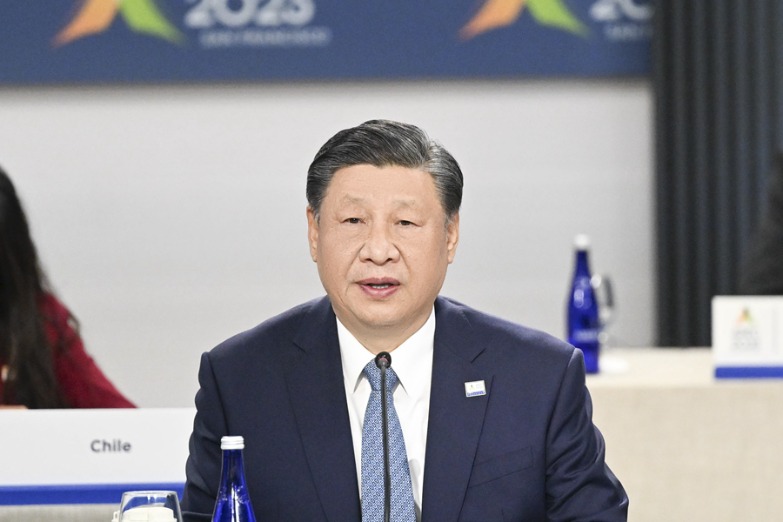
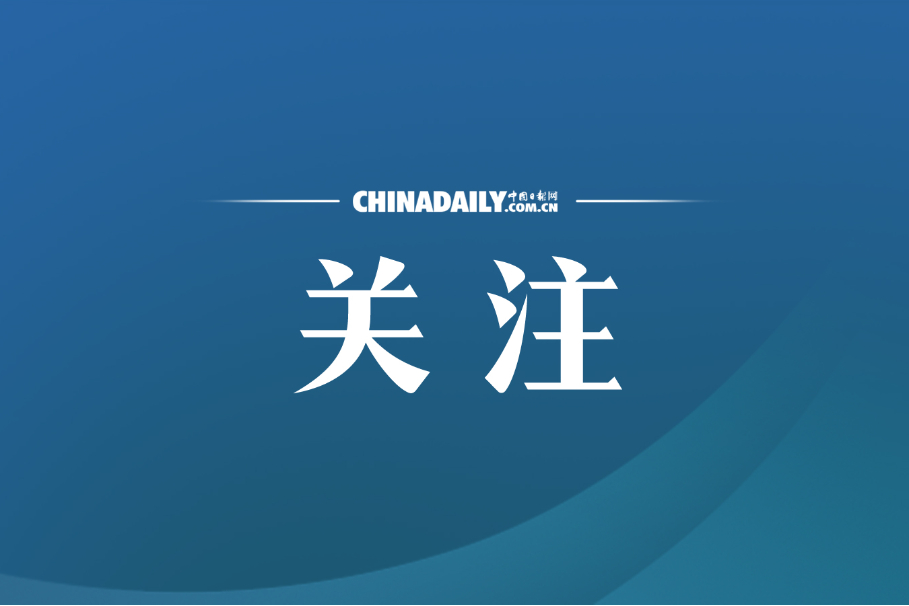
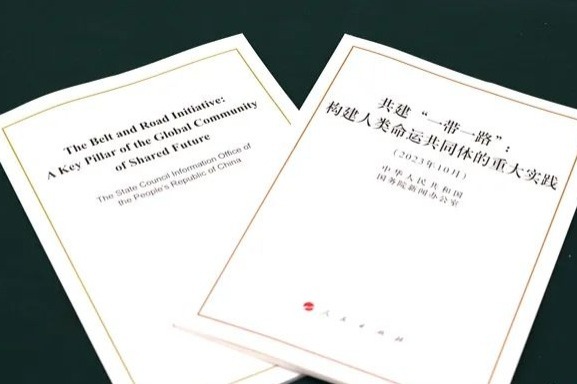
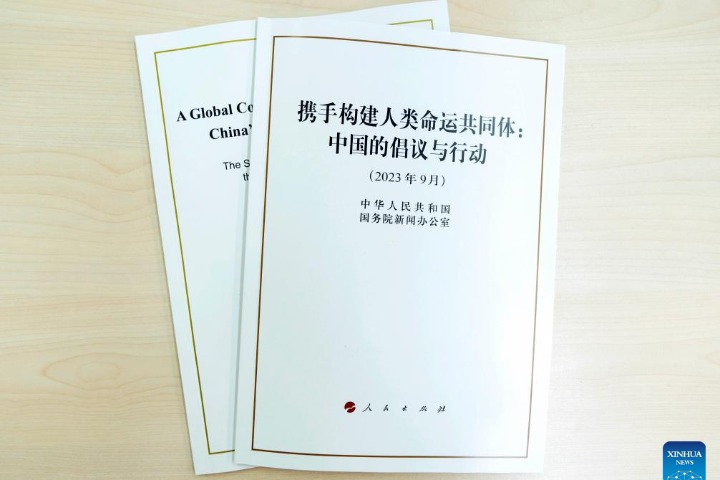
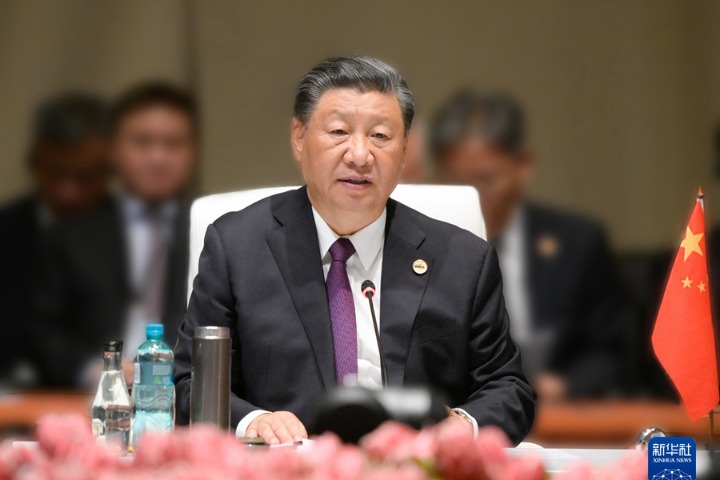



 英语点津微信
英语点津微信 双语小程序
双语小程序